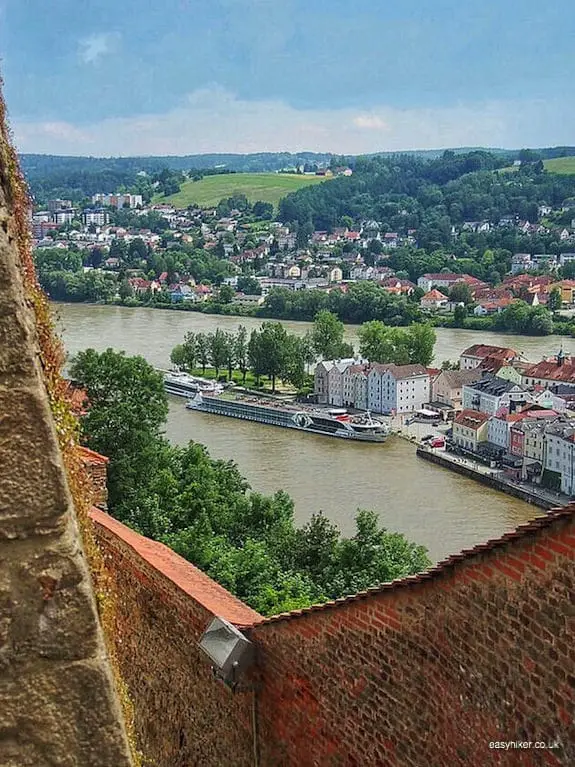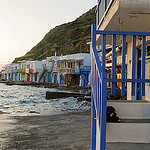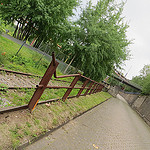When in Dijon, do as the Dijonnais do. Which is why we – on our recent trip to the capital of Burgundy – followed the Sentier du Martin-Pecheur, advertised in the official literature as the favourite “easy hiking” route of the Dijonais.

First of all, a clarification to avoid disappointment: the word “pecheur” in the name of the trail does not derive from the French word for sin (“péché”), and “Martin” is no reference to the Bishop of Tours – the guy who cut his cloak in two to share it with a beggar. So no saucy tales about the secret life of a saint, I am afraid.
Martin-Pecheur is simply the French word for the bird known in English as the kingfisher who, it seems, has been spotted occasionally on strolls down the sentier. Richness of flora and fauna is very much the leitmotiv of this 6 km long trail.
The PR material for the trail told us to expect an encounter with 3500 species along the route, including 150 species of birds who have been spotted on the banks of the Lac Kir and the River Ouche.
Are you quivering with excitement already? Good, because here we go.
Dijon’s Favourite Easy Hiking Trail

We start in the Jardin Drancy, mainly out of convenience, because this Garden is located dead in the centre of town. The walk from here down the Rue des Perrières (to the west of the Jardin) and subsequently down the calmer Rue du Marmuzot – which branches off towards the right – is basically just a prologue.
While the stroll through the pretty Parc des Carrieres Baquin, …

… down its slopes and past the artificial waterfall, only serves as teaser for what is to come.
At the bottom of the Carrieres Baquin, you will reach Talant, nowadays a suburb but in the Middle Ages the location of a convent and of a formidable fortress.
This part of the walk, it must be said, can feel a trifle long and would certainly be more exciting if the fortress or anything else from the medieval infrastructure had survived.
Talant centre (if that is the right word) a few blocks to the north looks a little less dreary (on Google Street View), but over here, it is all suburban sprawl, with little to divert the eye or the mind.
The walk proper starts when you enter the woodland called the Parc de la Fontaine des Fées by turning right into the designated foot path off Rue Sergent Avril.
Follow this path on its downhill route until you reach the Belvedere de Talant for your first panoramic view of Lac Kir, Dijon’s favorite green spot.

Lac Kir is an artificial lake, built in the 1960s to better control the periodical swellings of the river Ouche and to create a recreational area for the 150,000 inhabitants of the town, many of whom had settled after WWII in a newly constructed satellite town on the lake’s far side.

The lake was named after Felix Kir, the first post-WW-II Mayor of Dijon and the driving force behind the lake project as well as, for long periods, the lone voice in its favour.
Canon Kir, who had joined the priesthood as a young man, never renounced his vows and always regarded himself a politician second and a Catholic priest first, was quite a character: voted into office in 1945 as a homecoming hero of the Resistance, he continued to serve until 1967 when he was 90 years old.
He also entered French history as the last Member of the National Assembly to wear his clerical gowns into Parliament.
To celebrate the 50th anniversary of the lake in 2014, the municipal administration released a biography of the former mayor in the form of a 16-page graphic novel, which also explains the connection between Canon Kir and the drink which – you did not dare ask, did you – was indeed named after him.
You may think that the publication of a bande dessinee biography may be an odd way of honouring a local politician, but ask yourself: does your hometown have a mayor who barely survived an assassination attempt by a right-wing death squad?
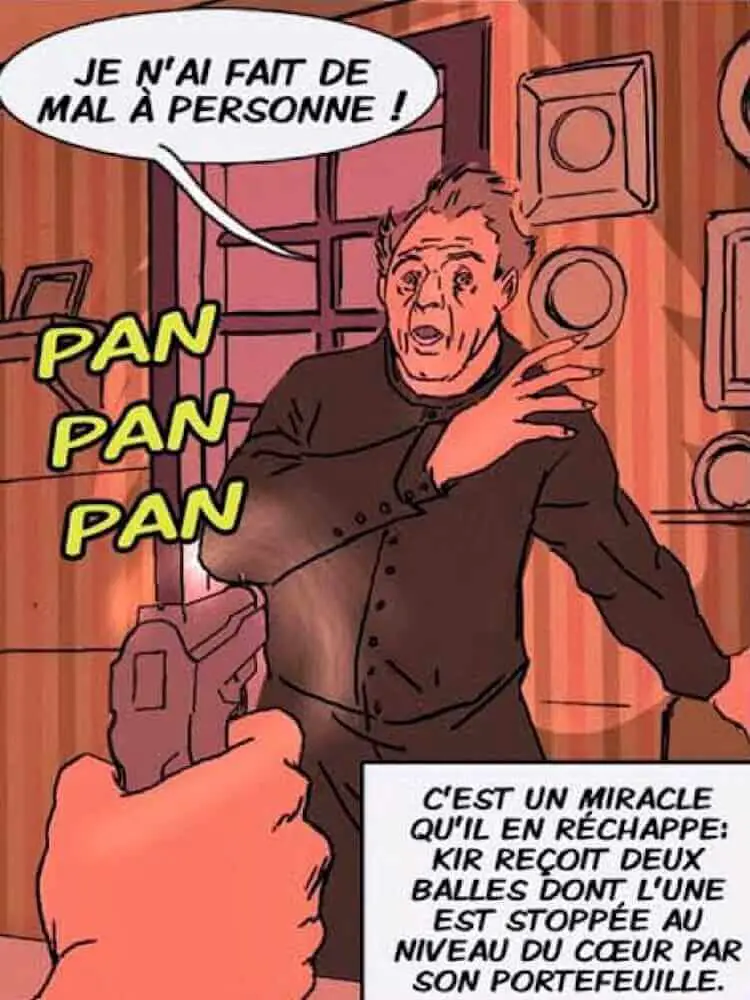
In the end, he survived by the skin of his purse – it was the wallet that stopped the bullet. Although in the Hollywood version, it would be his bible, of course.
The Parc de la Fontaine des Fées is crisscrossed by several trails. We recommend the following route.
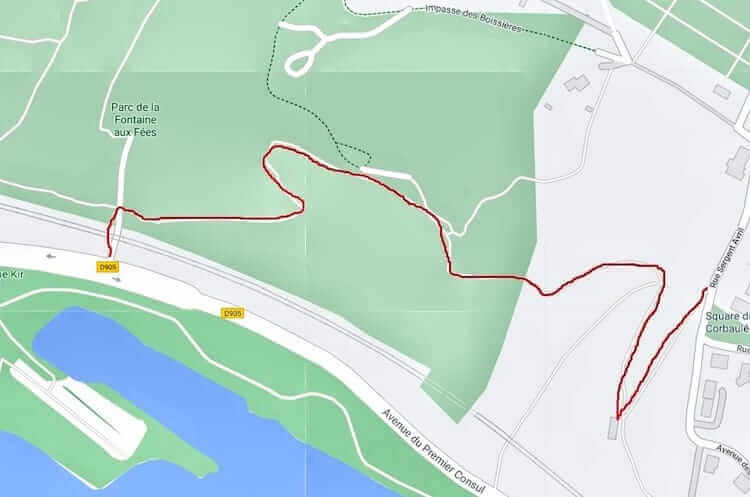
One, because it offers a good deal of variety: some stretches are open and airy, while others will lead you through a right thicket.

Most importantly, however, this route of Dijon’s favourite easy hiking trail takes you straight to the one feature of the park which you must not miss: the nearer of the two tunnels underneath the railway line which provide a way out at the bottom of the slope.
The other tunnel is on Avenue de la Combe Vallon, a good deal further down on the park’s western edge. After you have crossed the railway line, continue by turning left into Avenue du Premier Consul.

On the quietly picturesque stretch that now follows, it dawned on us that we had so far failed to spot more than a tiny fraction of the 3500 species said to inhabit this area.
Our spirits picked up a little on Lac Kir beach (no trees because that was what Canon Kir had specified: he wanted the beach to look as much as possible like the Cote d’Azur) when we met this jolly bunch of fellows …

…. at least one of which had long been thought to be extinct. Progress! Only 3440-plus species to go!
Just beyond the beach – which was quiet in the early spring but apparently attracts thousands of visitors every day throughout the summer months – the walk continues on the banks of the River Ouche.
The Ouche, in fact, flows right through the lake – which is therefore, technically speaking, no lake at all but merely an artificial widening of the river.
Behind the lock that serves as a visible border between lake and river, the Ouche simply returns to its natural, narrow shape.
On most days, it looks very calm and peaceful …

… but in the past, the Ouche regularly turned into a torrential stream, the last time in 1965 when it raised the level of the new lake by more than one meter and even carried away the mayor’s car when Canon Kir had come to inspect the flood damages. (After which the system of locks was reviewed and altered.)

We even managed to spot a water bird, much to our excitement. Had we, by chance, met the kingfisher himself?

In the calm of the Port de Dijon, the terminus of the walk a few steps away from the Ouche, …

… we took the time to conduct a little research.
To our disappointment, we established beyond doubt that our bird had, after all, not been a Martin Pecheur. The kingfisher has a more colourful coat and is much smaller with a shorter neck.
But that was not the only thing we found out. We also learned that most of the bird species in Dijon’s favourite easy hiking trail we had read about only come to Lake Kir in very cold winters when it is the last body of water in the region to freeze over.
More astonishing even, it turned out that nearly all of the 3500 plant species which we had been promised could only be “discovered” on an off-the-trail detour to Dijon’s Botanical Garden.
Fantastic! We had to laugh, out of sheer admiration for the audacity of the claim. The author, we agreed, deserved a medal. The cheek! The chutzpah!


